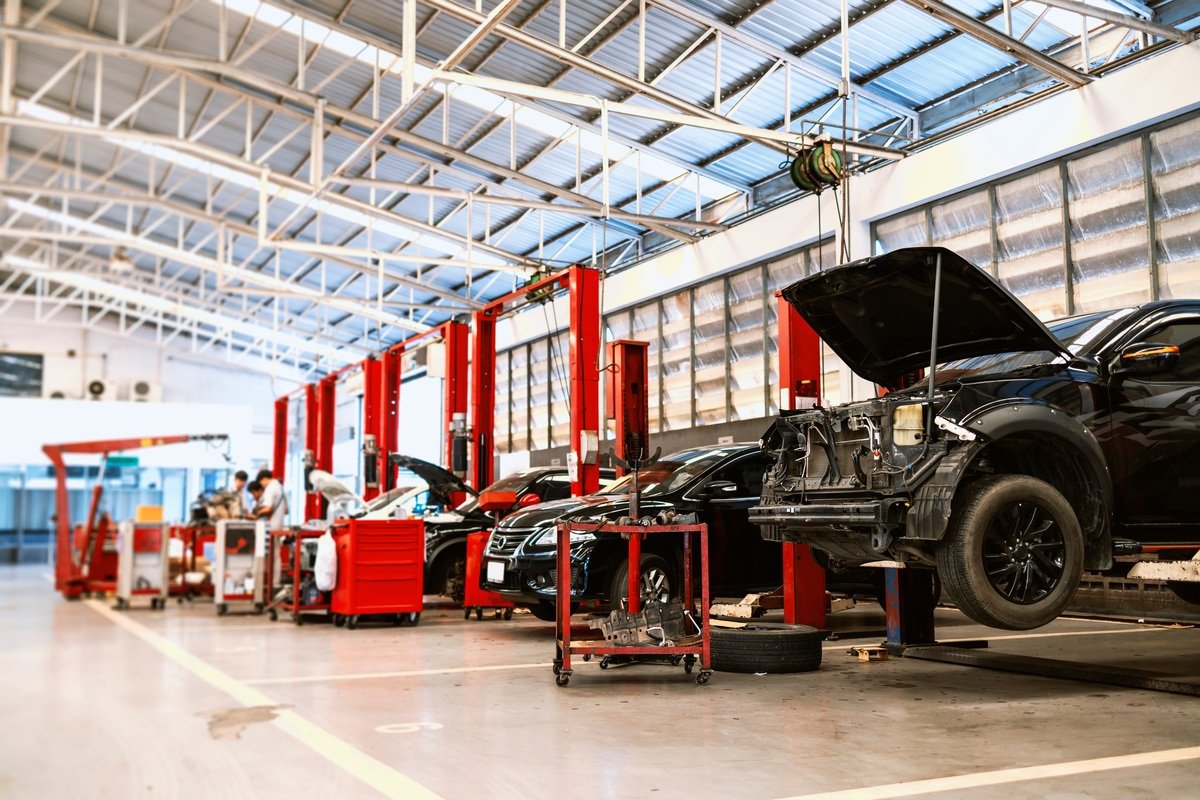Hyster Forklift PSI Engine Timing Cover O Ring Size Hyster forklifts are widely regarded as one of the most durable and reliable material handling solutions available in the market. Known for their robust design, these machines are used in warehouses, distribution centers, and factories worldwide. Hyster has built a reputation for producing high-performance forklifts that are both efficient and long-lasting, making them a preferred choice for businesses looking to move large quantities of goods in a safe and timely manner.
The PSI engine, used in many of Hyster’s forklifts, is an integral part of the forklift’s overall performance. Designed to provide optimal power and efficiency, the engine works tirelessly to ensure smooth operations. However, as with any mechanical system, maintaining the health of its components is crucial for the longevity of the equipment. A key component that plays an essential role in the efficiency of the PSI engine is the timing cover O-ring, which ensures the engine runs smoothly by preventing leaks and maintaining proper pressure within the engine.
Purpose of the Article
This article aims to provide a comprehensive guide on the importance of the timing cover O-ring size for Hyster forklifts with PSI engines. Whether you’re a fleet manager, mechanic, or DIY enthusiast, understanding the correct O-ring size is crucial for maintaining optimal engine performance. We’ll delve into the significance of the O-ring in engine efficiency, the consequences of incorrect sizing, and the best practices for choosing and replacing the O-ring.
Understanding the PSI Engine in Hyster Forklifts
What is a PSI Engine?
The PSI engine, short for Power Systems International, is a highly efficient engine used in a wide range of Hyster forklifts. Known for its reliability and power, the PSI engine delivers the torque and fuel efficiency required for demanding material-handling tasks. It is commonly found in forklifts that work in harsh environments, such as warehouses, ports, and construction sites, where engine performance is paramount.
PSI engines are designed with an emphasis on fuel economy, low emissions, and long service intervals. These engines are highly favored for their ability to withstand heavy use without compromising performance. The use of the PSI engine in Hyster forklifts ensures that operators can rely on their machines to perform effectively throughout the day, even in challenging conditions.
Components of a PSI Engine
The PSI engine is composed of several key components that work in tandem to provide optimal performance. Among the most crucial components is the timing cover, which protects the internal mechanisms of the engine, including the timing belt or chain. The timing cover serves as a shield against dirt, debris, and external elements that could cause wear and tear on the engine.
Hyster Forklift PSI Engine Timing Cover O Ring Size The timing cover is sealed with an O-ring, which is a simple yet vital component that prevents leaks and ensures that engine pressure remains at optimal levels. This O-ring must be the correct size to guarantee a proper seal. If the O-ring is too small or too large, it can lead to engine inefficiencies, oil leaks, and even more severe engine damage.
How the PSI Engine Powers Hyster Forklifts
The PSI engine plays a pivotal role in powering Hyster forklifts. It generates the energy required to lift heavy loads and move them across long distances. The engine operates by converting fuel into mechanical power, which is then used to propel the forklift forward, backward, and to lift or lower its load. The engine must maintain consistent pressure and performance levels to ensure these actions happen smoothly and without interruption.
A small issue like a compromised seal in the engine, often due to a damaged or improperly sized O-ring, can drastically reduce the engine’s performance. The O-ring ensures that the timing cover remains sealed, preventing oil leaks and allowing the engine to run efficiently. Any failure in the O-ring can lead to performance issues that may require costly repairs or even complete engine replacement.
The Timing Cover and O-Ring: Basics
What is a Timing Cover?
Hyster Forklift PSI Engine Timing Cover O Ring Size The timing cover is an essential part of the engine, designed to protect the timing mechanism, such as the timing chain or belt. It acts as a protective barrier to prevent dirt, debris, and moisture from entering the engine, which could cause damage to critical parts. In a PSI engine, the timing cover houses vital components that ensure the engine operates at the correct timing, which is crucial for optimal performance.
The timing cover is typically made from durable materials such as aluminum or steel, designed to withstand the harsh conditions that forklifts often operate in. Over time, however, the timing cover may begin to show signs of wear, particularly where the O-ring seals the cover to the engine block.
What is an O-Ring?
An O-ring is a small, circular rubber gasket used to create a seal between two parts. It prevents fluid or gas from leaking between these parts, ensuring that engine components remain lubricated and operate at the correct pressure. O-rings are essential in many parts of a forklift engine, especially in the timing cover, where they provide a seal that keeps oil in and contaminants out.
O-rings are usually made from materials such as rubber, silicone, or nitrile, depending on the application and environmental factors. The material of the O-ring must be chosen carefully to ensure that it can withstand high temperatures, pressure, and exposure to engine fluids such as oil and coolant. A high-quality O-ring will provide a tight seal and help maintain the engine’s overall efficiency.
Why the Timing Cover O-Ring Size Matters
The size of the timing cover O-ring is critical for maintaining a proper seal. If the O-ring is too small, it may fail to create a tight seal, leading to leaks and loss of engine oil. Conversely, if the O-ring is too large, it may not fit properly into the timing cover groove, causing a poor seal and potential engine damage. This can lead to pressure loss, overheating, and ultimately a decline in engine performance.
Choosing the correct O-ring size is crucial because it directly affects the engine’s ability to function properly. A properly sized O-ring ensures that the timing cover is securely sealed, preventing contaminants from entering the engine and keeping oil in the system. Regular maintenance and correct O-ring sizing are vital for keeping Hyster forklifts running smoothly and efficiently.
Determining the Correct O-Ring Size
Measuring the Timing Cover O-Ring
Hyster Forklift PSI Engine Timing Cover O Ring Size To determine the correct O-ring size for your Hyster forklift, you need to measure the O-ring that’s currently in place. The first step is to carefully remove the old O-ring from the timing cover, making sure not to damage any of the surrounding components. Once the O-ring is removed, you will need to measure its internal diameter, outer diameter, and cross-sectional thickness.
To measure the internal diameter, use calipers to measure the inner circumference of the O-ring. For the outer diameter, measure the full diameter from one side of the O-ring to the other. Finally, measure the thickness of the O-ring by measuring its cross-section at the widest point.
Standard O-Ring Sizes for PSI Engines
Hyster forklifts with PSI engines use specific O-ring sizes depending on the model and year of the forklift. Common O-ring sizes include those with inner diameters ranging from 1 to 3 inches and outer diameters from 2 to 4 inches. It is important to refer to the forklift’s manual or consult with the manufacturer to ensure the right size.
For those who are unsure of the appropriate O-ring size, it is recommended to reach out to the manufacturer or a certified technician who specializes in Hyster forklifts. They can help confirm the size based on your forklift’s specifications and ensure that you are using the correct O-ring.
Signs of an Incorrect O-Ring Size
If the O-ring is too small, you may notice engine oil leaks around the timing cover. The oil leakage can cause the engine to overheat or lead to low oil pressure, both of which can damage the engine over time. On the other hand, if the O-ring is too large, it might not sit properly in its groove, causing the timing cover to be poorly sealed. This can result in dirt, moisture, and other contaminants entering the engine, causing further damage to the internal components.
Replacing the Timing Cover O-Ring
When to Replace the O-Ring
O-rings are generally durable but will wear out over time due to exposure to heat, pressure, and engine fluids. It’s essential to replace the timing cover O-ring when signs of wear, cracks, or leaks are detected. Additionally, it is recommended to replace the O-ring during scheduled maintenance, particularly if the forklift is frequently used in high-stress environments.
Regular inspections can help identify when an O-ring needs to be replaced before it causes significant damage to the engine. Replacing the O-ring early can prevent oil leaks, overheating, and costly engine repairs.
Step-by-Step Replacement Process
Replacing the timing cover O-ring is a relatively straightforward process if you have the right tools and follow the steps carefully. First, ensure the forklift engine is cool before starting any work. You will need basic tools like a socket wrench, screwdrivers, and calipers to remove the old O-ring and install the new one.
Hyster Forklift PSI Engine Timing Cover O Ring Size Begin by loosening and removing the bolts holding the timing cover in place. Once the cover is removed, you can access the O-ring. Carefully remove the old O-ring, being cautious not to scratch the groove in the timing cover. Clean the area thoroughly before installing the new O-ring. Ensure that the new O-ring matches the exact size of the original one and fits snugly into the groove.
Best Practices for Ensuring a Proper Seal
To ensure that the new O-ring provides an effective seal, it’s important to apply a small amount of lubricant to the O-ring before installation. This helps to create a smoother surface, reducing the risk of damage during installation. Once the new O-ring is in place, carefully align the timing cover and tighten the bolts evenly to ensure a tight, secure seal.
Maintenance Tips for PSI Engines in Hyster Forklifts
Regular Inspection and Maintenance
Maintaining the health of your PSI engine is essential for the overall performance of your Hyster forklift. Regular inspections should include checking for signs of leaks, unusual noises, and overheating. During these inspections, it’s important to examine the timing cover and O-ring for signs of wear. Additionally, ensure that the engine oil level is correct and that there are no blockages in the cooling system.
Preventing O-Ring Failures
Preventing O-ring failures can be achieved by using high-quality O-rings made from durable materials that can withstand the high heat and pressure conditions inside the engine. Additionally, ensure that O-rings are installed correctly, and always replace them with the same size and material recommended by the manufacturer.
Extending the Lifespan of the Timing Cover O-Ring
To extend the lifespan of the timing cover O-ring, it’s essential to take care of the forklift’s engine and keep it well-maintained. Avoid exposing the forklift to extreme temperatures, as excessive heat can cause the O-ring to degrade faster. Regular cleaning of the engine and checking for any contaminants will also help prevent premature wear and tear on the O-ring.
Troubleshooting Common Issues
Leaking Timing Cover
A leaking timing cover is one of the most common issues caused by a damaged or improperly sized O-ring. If you notice oil stains around the timing cover or a drop in engine oil levels, it’s likely that the O-ring needs to be replaced.
Engine Performance Problems
Hyster Forklift PSI Engine Timing Cover O Ring Size If the O-ring is not functioning properly, you may experience a decline in engine performance, including difficulty starting the forklift or reduced power. These issues can often be traced back to a compromised O-ring seal that affects the engine’s pressure and lubrication.
Frequent O-Ring Failures
Frequent O-ring failures can be caused by using low-quality materials, improper installation, or exposure to harsh environmental factors. It’s important to ensure that the O-ring material is compatible with the engine’s operating conditions to prevent premature failure.
Conclusion
The timing cover O-ring in Hyster forklifts with PSI engines plays a vital role in ensuring the engine operates efficiently. By maintaining the correct O-ring size, performing regular maintenance, and replacing the O-ring when necessary, you can ensure that your forklift runs smoothly and avoids costly repairs. Always consult your forklift’s manual or a professional technician to ensure that you are using the right O-ring size and materials to optimize your engine’s performance.










